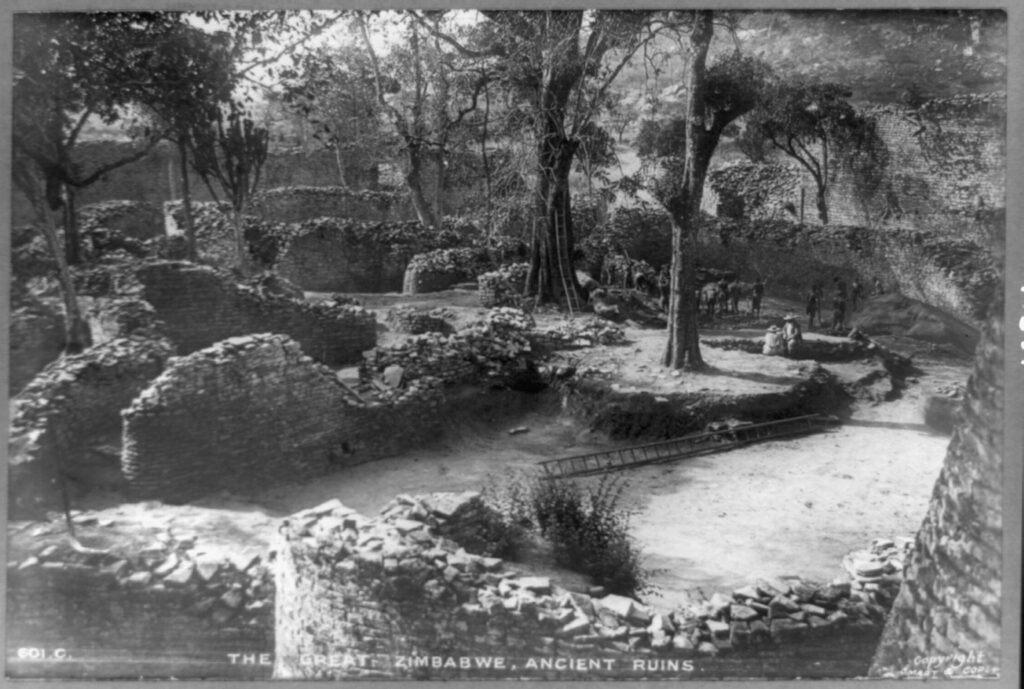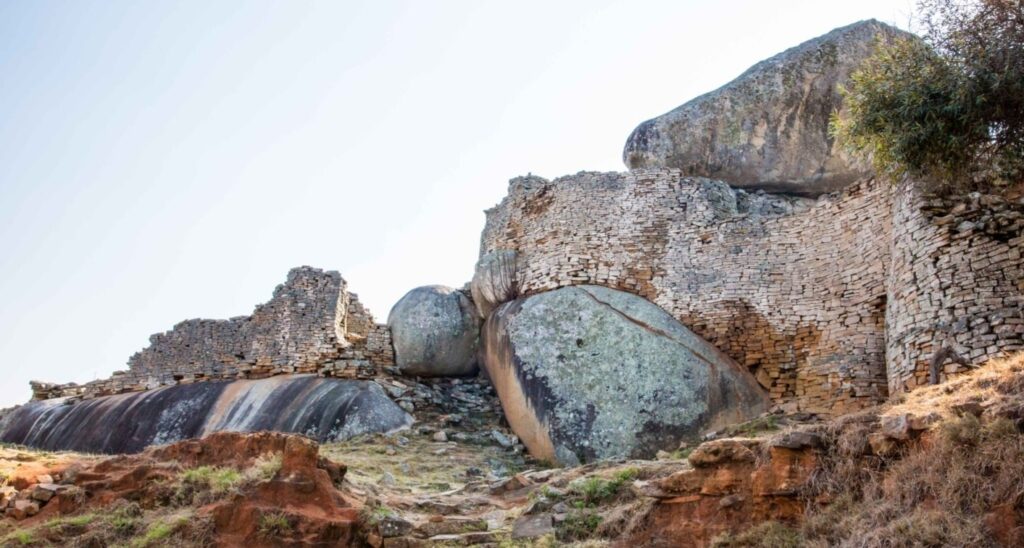Image Source – UNESCO
In the heart of Southern Africa, nestled in the highlands of modern-day Zimbabwe, lies the remains of an ancient city that once served as the capital of a powerful kingdom: Great Zimbabwe. This medieval city, near the town of Masvingo, was once the heart of a thriving trading empire from the 11th to the 15th centuries.
Great Zimbabwe is also locally known as “Dzimba Dzamabwe” meaning the house of stone or stone buildings. It was known for its large circular wall and tower and impressive stone structures that still stand today, a testament to the advanced civilization of ancient Africa. It was an engineering wonder that baffled both archaeologists and historians alike, who refused to believe that Africans could have built such an impressive city. Rather, they credited its construction to Phoenicians, Babylonians, and Arabians, anyone but the Africans who put in the work.
Known as one of the largest and most significant historical sites on the continent, Great Zimbabwe remained overshadowed, misunderstood, and dismissed by Western historians for centuries. Today, however, it is celebrated as a United Nations Educational, Scientific and Cultural Organization (UNESCO) World Heritage Site and a symbol of African pride and cultural heritage. The ruins were designated a UNESCO World Heritage Site in 1986.
The first inhabitants of Great Zimbabwe were Shona-speaking peoples who likely settled in the region as early as 400 C.E. Historical records show that the Shona people constructed Great Zimbabwe during the late Iron Age under King Munhumutapa.
In the Shona language, zimbabwe translates approximately to “stone house”, and because of the site’s size and scope, it became known as Great Zimbabwe. The site, covering an area of 80 hectares, housed large granite buildings which were once the homes of powerful rulers. A bustling hub of trade and culture, it was home to an estimated 18,000 people. The land surrounding the city was ideal for cattle rearing and gold mining.

Library of Congress via Wikimedia Commons
Back then, the land was super rich and full of possibilities. They had fertile soil for farming and cattle ranching, and mineral-rich territories that provided gold, iron, copper, and tin for trading and crafting. It was a thriving city that attracted foreign traders from faraway lands. Great Zimbabwe’s strategic location near the Zambezi and Limpopo rivers was instrumental to its rise and prosperity. This prime location allowed it to tap into lucrative trade networks that extended to the Indian Ocean and beyond, facilitating the exchange of gold, ivory, and other valuable commodities.
The Archaeological Site at Great Zimbabwe
The site is generally divided into three main areas: the Hill Complex, the Great Enclosure, and the Valley Ruins.
The Hill Complex: Formerly called the Acropolis, it is believed to have been the spiritual and religious center of the city. It is a series of structural ruins that sit atop the steepest hill of the site that rises 262 feet (80 meters) above the ground, and its ruins extend some 328 feet (100 meters) by 148 feet (45 meters). It is the oldest part of Great Zimbabwe, with stratigraphic evidence showing that the first stones were laid there around 900 C.E. The builders incorporated natural granite boulders and rectangular blocks to form walls up to 20 feet (6 meters) thick and 36 feet (11 meters) high.

Image Source – Facebook / Tourism Zimbabwe
The Great Enclosure: South of the Hill Complex lies the Great Enclosure, a walled, circular area dating to the 14th century. It is one of the largest existing structures from ancient sub-Saharan Africa.
Its outer wall is some 820 feet (250 meters) in circumference, with a maximum height of 36 feet (11 meters). The remains of its outer wall measure over 800 feet long and up to 32 feet high. The walls were built without mortar, relying on carefully shaped rocks to hold the wall’s shape on their own. The wall enclosed several huts and a tall, cone-shaped tower.
Inside the enclosure is a second set of walls, following the same curve as the outside walls, which end in a stone tower 10 meters (33 feet) high. While the function of this enclosure is unknown, archeologists suggest it could have been the city’s center and was occupied only by the elite or a symbolic grain storage facility.

Image Source – Andrew Moore via Wikimedia Common
The Valley Ruins: This third section, located between the Hill Complex and the Great Enclosure, consists of a significant number of houses made mostly of mud-brick (daga). The valley ruins, with their unique architectural elements and interconnected enclosures, offer a glimpse into the lives of the people who once called this ancient city home.
The Fall of Great Zimbabwe
Great Zimbabwe’s prosperity continued until the mid-15th century when it began to decline and the Shona people migrated elsewhere. The exact reasons for the abandonment are unknown. There are several theories about the decline. One theory suggests that overgrazing and drought depleted the soil on the Zimbabwe Plateau, leading to the city’s decline. Some say overpopulation, which led to the exhaustion of resources, was a contributing factor.
Another theory is that the people of Great Zimbabwe had to move to maximize their exploitation of the gold trade network. Its people had moved in two directions: North to establish the Mutapa state and South to establish the Torwa state. The Mutapa rulers continued the tradition of building structures in stone, similar to Great Zimbabwe, although considerably smaller in size. The Torwa state was established in southwest Zimbabwe around the same time as Mutapa.
Most of what was left of Great Zimbabwe, especially its artifacts, were looted by European visitors in the 20th century.
Despite the many unanswered questions surrounding its rise and fall, Great Zimbabwe continues to fascinate people worldwide, including explorers and historians.
Today, the great ancient city remains a source of pride and inspiration for Zimbabweans, a powerful reminder of Africa’s deep-rooted history and the brilliance of its early civilizations. Shona villages are located nearby, and many residents work to maintain the site. A religious center is close by too, and the site still attracts worshippers who practice traditional Shona faiths.





